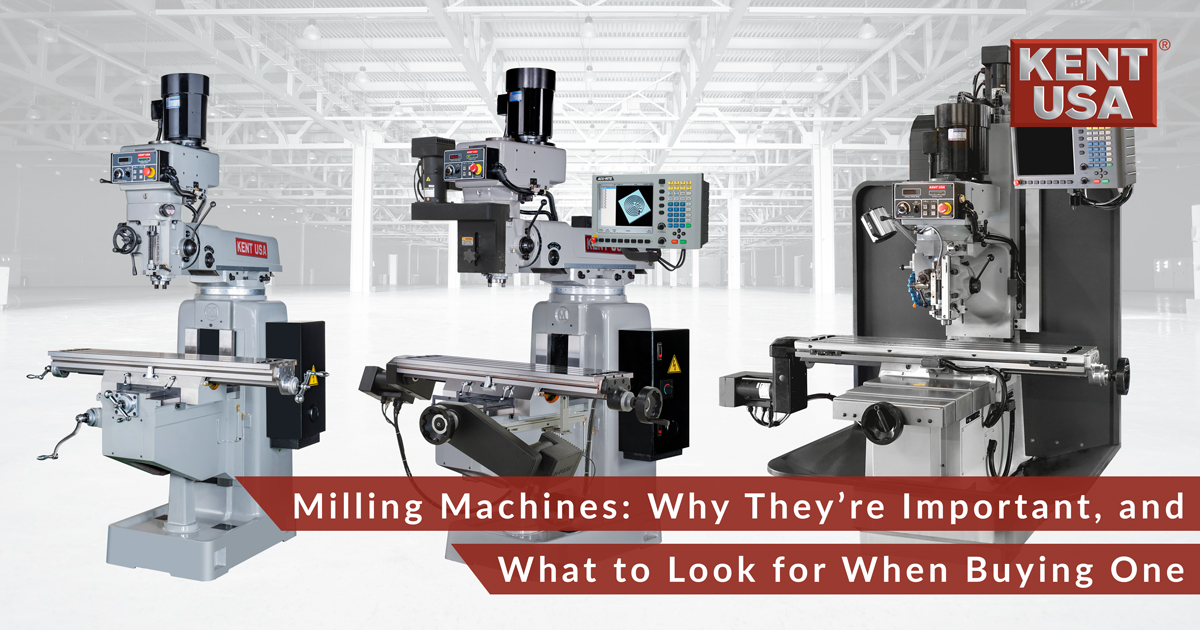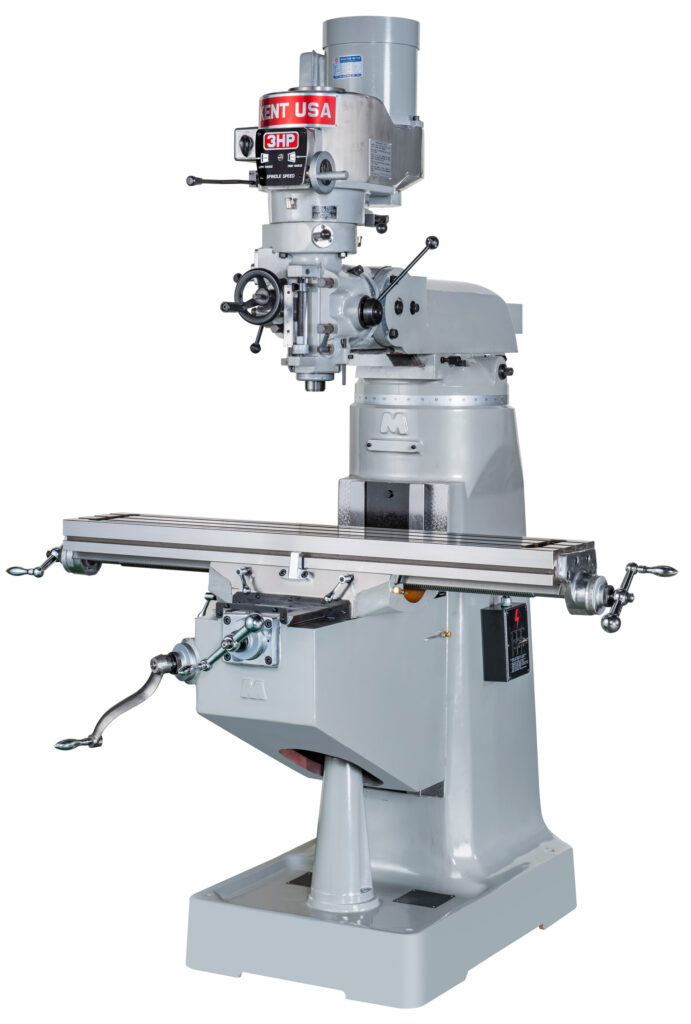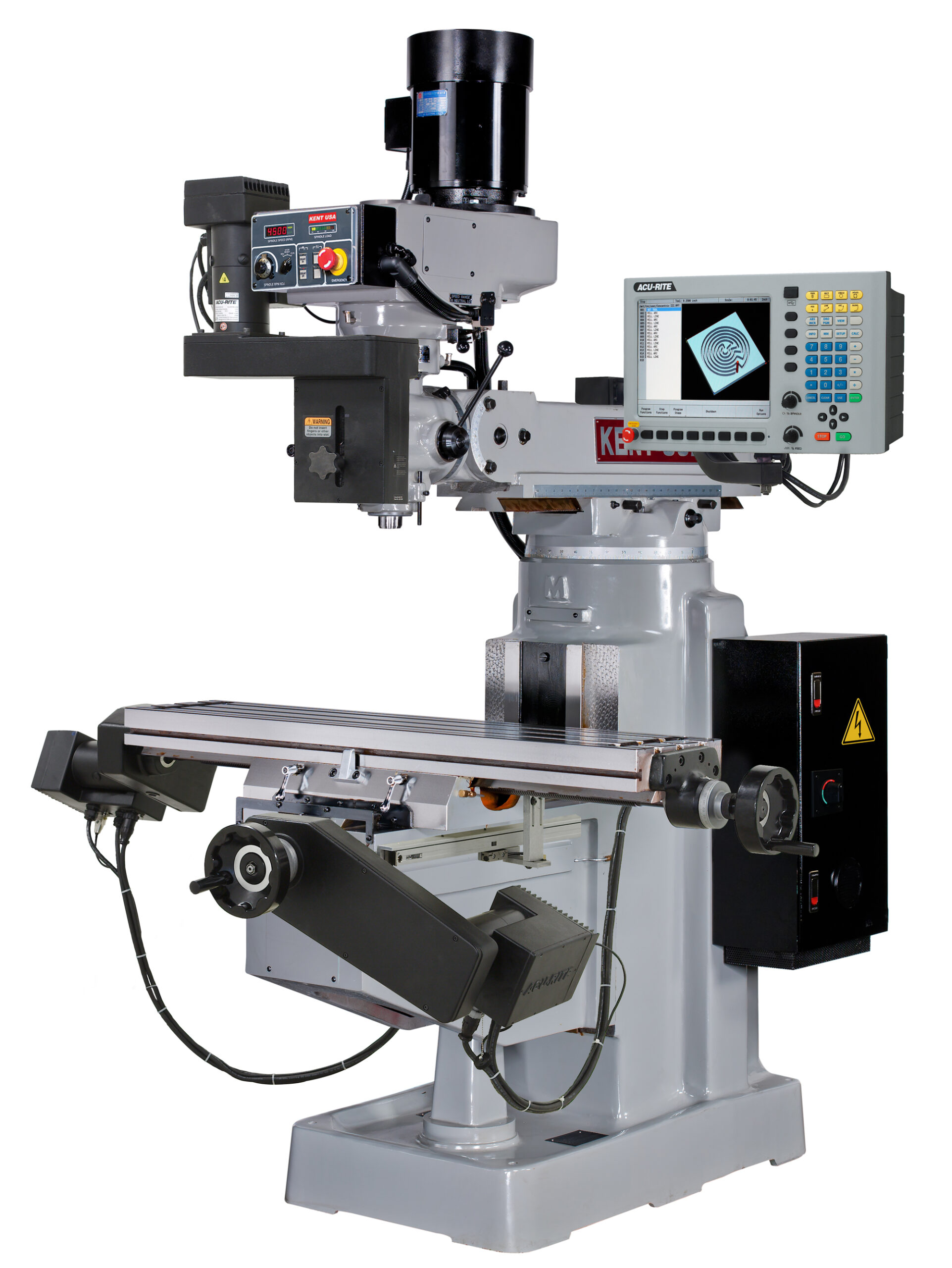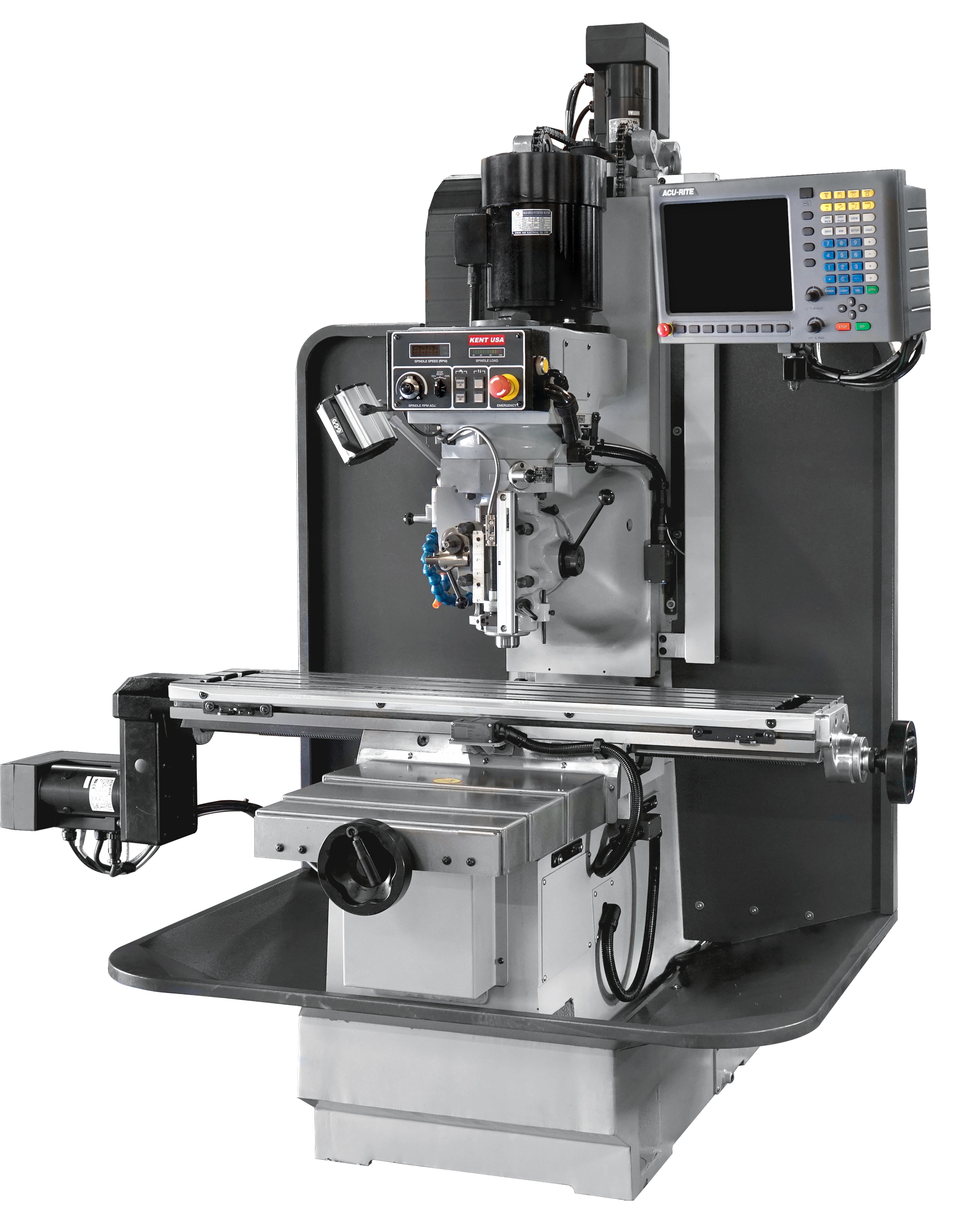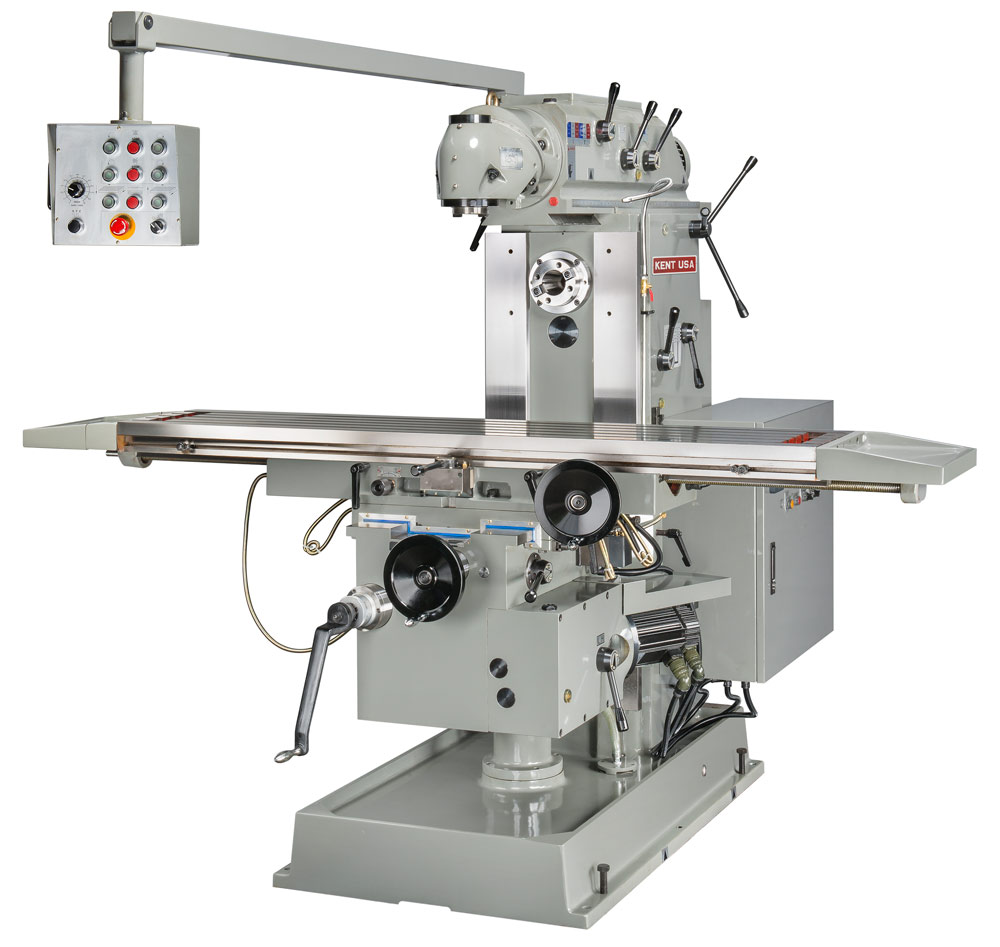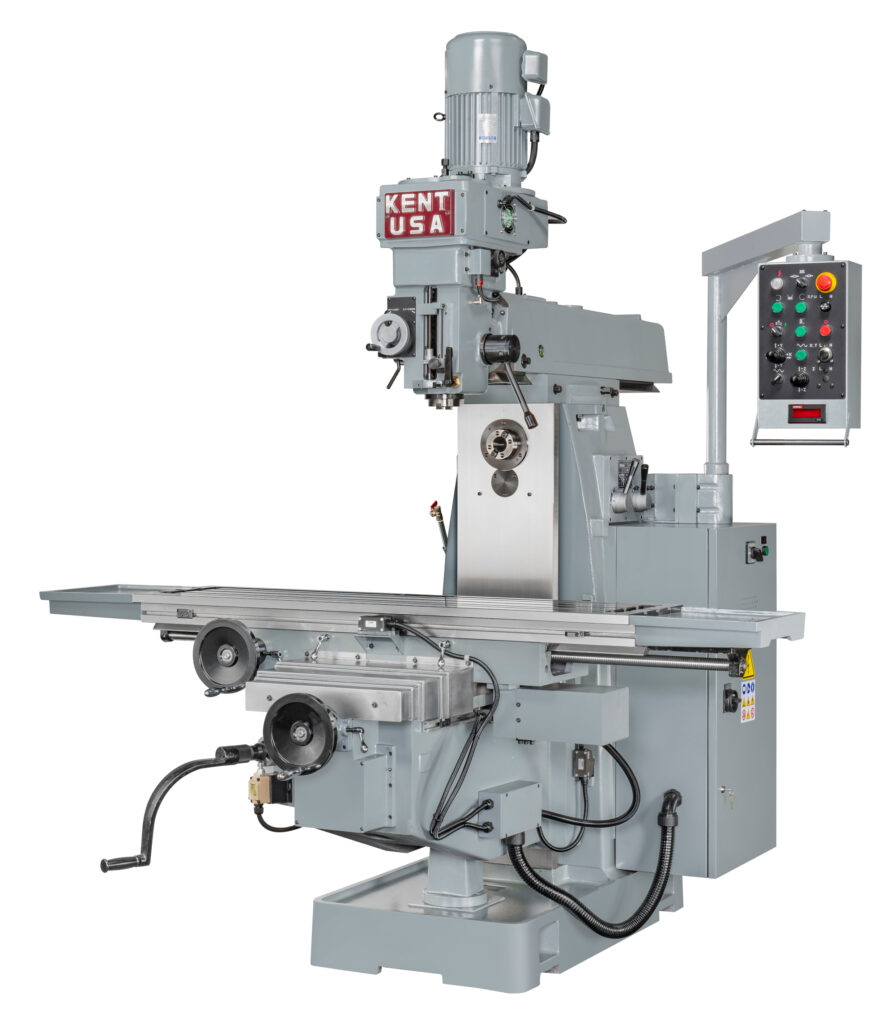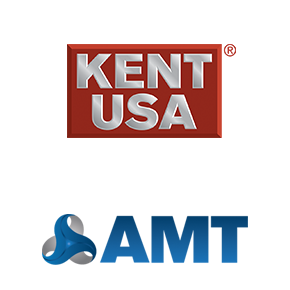Milling machines are often among the first pieces of equipment in many shops. They are used to machine surfaces, mill pockets, drill and bore holes, and much more. This makes them a mainstay of any metalworking company or repair facility. Even home garage shops whose owners are serious about making metal and plastic parts.
Types of Milling Machines
Milling machines come in a variety of sizes and configurations. The most popular has long been the manually operated Knee Mill.
In fact, versions of this venerable design have been around for nearly nine decades. These are now accompanied by CNC Models. These allow the operator to run the machine manually—by turning the cranks and pulling the levers—or in fully automatic mode.
The bed mill is a close cousin of the knee mill. The main difference is a fixed table and movable ram, the exact opposite of a knee mill. This gives it much greater load capacity. Where a typical Bed Mill might carry 1500 lbs. or more, a knee mill of the same size can handle half that amount. Here again, CNC versions are available.
Each of the milling machines mentioned thus far has vertical spindles. However, several types of Combination Mills exist.
Universal Milling Machines have a horizontal spindle and auxiliary vertical spindle that the operator can swing into place as needed.
H/V milling machines, on the other hand, have full-sized spindles in each direction for maximum flexibility and rigidity.
Milling Machine Options
Whatever size or machine type is right for your shop, it’s a good idea to explore all the options before signing on the dotted line. For instance, a digital readout (DRO) with advanced functions makes it easy to machine common part features such as bolt hole patterns and pockets. And power drawbars eliminate the manual cranking needed to change tools. Similarly, servo-driven X, Y, and Z-axis makes machine operation easier and more productive.
Most milling machines come with an R-8 spindle. For heavy cuts, an NMTB-40 is a nice upgrade. So is an electronic spindle speed readout, centralized lubrication, and automatic spindle reversal. Finally, milling machines with ball screws are more accurate than those with lead screws. They also last longer, with less hassle. That’s just a quick overview, though. Just be aware that there’s plenty more to know about these versatile machines. If you care to discuss it further, give KENT USA® a call. We know milling machines.
Share this article:

